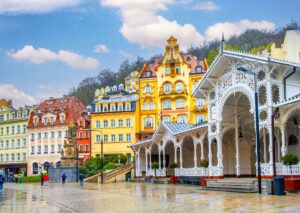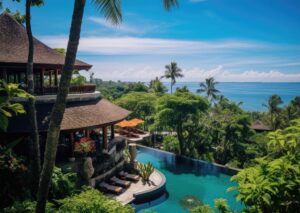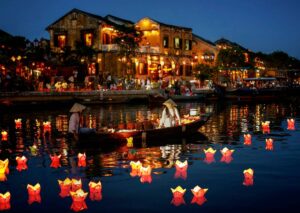Hey there, fellow wanderluster! So, the Maldives. The name alone probably conjures up images of eye-wateringly expensive overwater villas, champagne on tap, and a kind of exclusive luxury that feels… well, maybe a little out of reach or perhaps not entirely you. I get it. For the longest time, that was my mental postcard of this iconic archipelago too. A beautiful, yet somewhat one-dimensional, paradise reserved for honeymooners with trust funds. But what if I told you there’s another side to these scattered jewels in the Indian Ocean? A side that’s not only more accessible and affordable but, crucially, more sustainable and deeply connected to the vibrant Maldivian culture?

Over the years of scribbling in my travel journals and sharing stories on this blog, I’ve always sought experiences that go beyond the tourist trail, that enrich both me and the places I visit. When the Maldives kept whispering my name, I knew I had to find a way to explore it responsibly, to see if the postcard image was the only one available. And let me tell you, what I discovered was a revelation! A Maldives where you can wake up to the call to prayer instead of just the lapping of waves (though you get that too!), where your tourist dollars directly empower local communities, and where you can actively participate in preserving the very beauty that draws us all there.
This isn’t just another “luxury Maldives” guide. Oh no. We’re diving deeper. This is your comprehensive, tell-all guide to crafting an unforgettable and sustainable week-long adventure in the Maldives. We’re talking about staying on local islands, eating authentic Maldivian cuisine, exploring underwater wonders with a clear conscience, and making genuine connections. It’s about experiencing the soul of the Maldives. So, grab a cup of chai (or a coconut, if you’re already in the mood!), settle in, and let me walk you through how to make your Maldivian dream a truly enriching and responsible reality. Prepare to have your perceptions beautifully reshaped!
Archipelago Overview: More Than Just Pretty Beaches
The Maldives, officially the Republic of Maldives, isn’t a city, but a stunning archipelago nation located in the Indian Ocean, southwest of Sri Lanka and India. It’s a chain of 26 natural atolls, which are made up of over 1,190 coral islands, of which around 200 are inhabited. Picture this: tiny emerald islands, fringed with powdery white sand, floating in vast expanses of turquoise and sapphire water. It’s as breathtaking in reality as it is in photographs.
Quick Facts to Get You Started:
- Language: The official language is Dhivehi. While English is widely spoken in tourist resorts and increasingly on local islands (especially by younger generations and those in the tourism industry), learning a few basic Dhivehi phrases will be warmly appreciated. Try “Assalaamu alaikum” (Hello) and “Shukuriyaa” (Thank you).
- Currency: The local currency is the Maldivian Rufiyaa (MVR). While resorts often price in USD and accept major credit cards, you’ll need MVR for local islands – for guesthouses, local shops, cafes, and some activities. $1 USD is roughly equivalent to 15 MVR. It’s a good idea to have some cash on hand. For the best exchange rates and to manage your travel money seamlessly, consider using a multi-currency account like Revolut or Wise. They offer great rates and low fees, making them super handy for international travel.
- Time Zone: Maldives Standard Time is GMT+5.
- Religion: The Maldives is an Islamic country, and Islam is the state religion. This is incredibly important to remember, especially when visiting local islands. Dress modestly (cover shoulders and knees) outside of your resort or designated tourist beaches. Alcohol is prohibited on local islands (available in private resorts). During Ramadan, eating, drinking, and smoking in public during fasting hours are restricted.
What Makes the Maldives Unique?
Beyond the obvious stunning natural beauty, what truly sets the Maldives apart is its unique geography – it’s one of the world’s most geographically dispersed countries and the lowest-lying country on the planet, with an average ground-level elevation of just 1.5 meters (4 feet 11 inches) above sea level. This makes it incredibly vulnerable to climate change and rising sea levels, which is why sustainable tourism here isn’t just a buzzword, it’s a necessity.
The culture is a rich tapestry woven from Sri Lankan, Indian, Arab, and African influences. You’ll see it in the music (Bodu Beru drumming is infectious!), the boat-building skills (the traditional dhoni is a work of art), the cuisine (tuna and coconut are staples), and the warmth of the people. Choosing to explore local islands offers a precious window into this authentic Maldivian way of life, a far cry from the often-sterilized environment of an isolated resort.
How to Get There: Your Gateway to Paradise
Reaching this island paradise typically involves flying into the main international airport.
- Flights: The primary gateway is Velana International Airport (MLE), located on Hulhulé Island, near the capital city of Malé. Many major airlines from Asia, Europe, and the Middle East fly directly to Malé. You can often find competitive flight deals on platforms like CheapOair or Trip.com. I always recommend comparing prices and booking in advance, especially during peak season.
- Pro Tip: If you’re flying from afar, consider a stopover in a major hub like Dubai, Doha, Singapore, or Istanbul to break up the journey. You might even be able to snag a deal that includes a few days in another exciting city!
- Airport Transfers from Home: Don’t forget to arrange your transport to your departure airport back home. For hassle-free airport transfers, whether you need a private car or a shared shuttle, check out DiscoverCars.com. They often have good options for getting to and from major international airports.
- International Travelers:
- Visa: Most nationalities receive a free 30-day tourist visa on arrival, provided you have a valid passport, a confirmed onward ticket, and sufficient funds (or a confirmed hotel booking). Do check the latest requirements for your specific nationality before you travel.
- Customs: Be aware of strict regulations regarding the import of alcohol, pork products, religious idols, and pornographic materials. These are prohibited. Your luggage will be x-rayed upon arrival.
- Getting to Your Island (Post-Arrival at MLE):
- Seaplane: For many resorts and some more remote local islands, a seaplane transfer is a quintessential Maldivian experience. Companies like Trans Maldivian Airways (TMA) operate these scenic flights. It’s an adventure in itself, offering breathtaking aerial views of the atolls! Booked through your resort or guesthouse.
- Domestic Flight: For islands further from Malé or in different atolls, you might take a domestic flight to a regional airport, followed by a speedboat. Maldivian Aero and FlyMe are the main domestic carriers.
- Speedboat: Many guesthouses on local islands relatively close to Malé (e.g., in Kaafu Atoll) will arrange speedboat transfers. These are faster than public ferries but more expensive. Expect shared or private hire options.
- Public Ferry (Dhoni): The most budget-friendly way to travel between nearby islands is by the local public ferry network. These are slower and operate on fixed schedules (often less frequent on Fridays). This is true local travel and an experience in itself, but requires more planning and flexibility.
Travel Insurance is a Must! Seriously, don’t even think about skipping this. For a trip like this, especially involving water activities and remote locations, comprehensive travel insurance is non-negotiable. I always use and recommend EKTA Travel Insurance. They offer various plans, and it gives you peace of mind knowing you’re covered for medical emergencies, trip cancellations, lost luggage, and more. Get a quote before you go!
How to Get Around: Navigating the Atolls Sustainably
Once you’re in the Maldives, getting around depends on where you’re staying and what you plan to do. Cars are pretty much non-existent for tourist travel between islands.
- Inter-Island Travel:
- Speedboats: As mentioned, these are common for resort transfers and excursions. For local island hopping, you can often charter a speedboat or join scheduled transfers offered by guesthouses. Faster, but with a higher carbon footprint and cost.
- Public Ferries (MTCC Plo Kethi network): This is the most sustainable and budget-friendly option for traveling between inhabited islands within the same atoll or nearby atolls. They are slower, yes, but offer a wonderful glimpse into local life as you’ll be traveling with Maldivians. Schedules can be found online (search for MTCC ferry schedule) or at the ferry terminals. Be aware that services are limited on Fridays.
- My Tip: If you plan to use public ferries extensively, factor in extra travel time. Delays can happen, and it’s all part of the adventure!
- Domestic Flights & Seaplanes: For longer distances between atolls, these are necessary. While not the greenest, they are unavoidable for reaching more remote areas. Try to combine trips or choose direct routes where possible.
- On Local Islands:
- Walking: Most local islands are small enough to explore entirely on foot. This is the best way to soak in the atmosphere, discover hidden corners, and stumble upon local cafes or shops.
- Bicycles: Many guesthouses offer free or cheap bicycle rentals. This is a fantastic and eco-friendly way to get around slightly larger islands, reach different beaches, or explore agricultural areas (like on Thoddoo).
- Scooters/Motorbikes: On some larger inhabited islands or in Malé City, you might see locals using scooters. Rental options for tourists are rare on most local islands and generally not needed.
- Taxis: You’ll find taxis in Malé City and Hulhumalé, and on a few larger islands like Gan in Addu Atoll. Generally not a primary mode of transport for a sustainable local island experience.
- Sustainable Transport Alternatives:
- Prioritize walking and cycling on islands.
- Choose public ferries over private speedboats when feasible.
- Support guesthouses and tour operators who use more fuel-efficient boats or practice responsible boating (e.g., not anchoring on coral).
- Kayaking/Canoeing: Some guesthouses offer kayaks, perfect for exploring the immediate lagoon around your island with zero emissions! Great for a morning paddle.

Daily Budget: Paradise on a Realistic Tab
The Maldives has a reputation for being incredibly expensive, but a sustainable trip focused on local islands can be surprisingly affordable.
- Accommodation (per night):
- Budget (Guesthouses on local islands): $50 – $100 USD (approx. 770 – 1540 MVR)
- Mid-Range (Boutique guesthouses, some eco-resorts): $100 – $250 USD (approx. 1540 – 3850 MVR)
- Luxury (Eco-luxury resorts, private villas): $300+ USD (can go into thousands!) (approx. 4620+ MVR)
- Food (per day):
- Local cafes/restaurants: $15 – $30 USD per person (approx. 230 – 460 MVR)
- Guesthouse meals (often half-board/full-board options): Included or $20 – $40 USD extra (approx. 308 – 616 MVR)
- Activities (per person, varies wildly):
- Snorkeling trip: $25 – $50 USD (approx. 385 – 770 MVR)
- Diving (per dive): $50 – $100 USD (approx. 770 – 1540 MVR)
- Sandbank trip/Sunset cruise: $30 – $60 USD (approx. 460 – 925 MVR)
- Watersports (kayak, paddleboard): $10 – $20 USD per hour (approx. 150 – 300 MVR)
- Transport (per day, averaged out):
- Public ferry: $1 – $5 USD per trip (approx. 15 – 77 MVR)
- Scheduled speedboat transfer (e.g., Malé to Maafushi): $25 – $35 USD one way (approx. 385 – 540 MVR)
Estimated Daily Budget (excluding international flights & seaplane transfers to remote resorts):
- Budget Traveler (staying in guesthouses, eating local, free/cheap activities): $70 – $120 USD per day
- Mid-Range Traveler (comfortable guesthouses, mix of local & guesthouse food, regular paid activities): $150 – $250 USD per day
Managing Your Money Smartly: Using a travel-friendly debit card or multi-currency account is a game-changer. Cards from Revolut or Wise help you avoid hefty bank fees on withdrawals and purchases abroad. You can hold MVR if supported or simply let the card convert at a great rate. Plus, their apps make tracking your spending super easy. There are ATMs in Malé and on some larger local islands, but they can charge fees, so withdrawing larger amounts less frequently is often better. Always inform your bank about your travel plans to avoid your cards being blocked!
Where to Stay: Your Eco-Friendly Maldivian Home
Choosing where to stay is pivotal for a sustainable Maldives trip. Opting for locally owned guesthouses on inhabited islands directly supports the local economy and offers a more authentic experience. Many are also stepping up their eco-game!
- Local Inhabited Islands (The Sustainable Choice!):
- Why choose them? Experience authentic Maldivian culture, support local communities directly, generally more affordable, often run with a greater consciousness towards the immediate environment. You’ll find designated “bikini beaches” for tourists on many of these islands.
- Recommended Islands & Guesthouses:
- Ukulhas (Alif Alif Atoll): Known for its commitment to waste management and environmental cleanliness. Often lauded as an eco-pioneer among local islands. Look for guesthouses like the Ukulhas Inn or West Sands Ukulhas. Great for diving, snorkeling, and beach life.
- Thoddoo (Alif Alif Atoll): Famous for its agricultural produce, especially watermelons and papayas. A larger island offering a glimpse into farming alongside beautiful beaches. Thoddoo Retreat and Ariya Inn Thoddoo are popular.
- Dhigurah (South Ari Atoll): A long, thin island renowned for year-round whale shark and manta ray sightings. Perfect for marine enthusiasts. Guesthouses like Bliss Dhigurah or TME Retreats Dhigurah focus on combining comfort with eco-consciousness and dive expertise.
- Fulhadhoo (Baa Atoll): Located within a UNESCO Biosphere Reserve, this island boasts some of the most stunning, pristine beaches you can imagine. It’s more remote and offers a truly tranquil escape. Consider Azoush Tourist Guesthouse.
- Maafushi (Kaafu Atoll): One of the first local islands to open up to tourism. It’s more developed and busier, with a wide range of guesthouses, restaurants, and tour operators. Good for budget travelers and those seeking lots of activity options, but perhaps less “off the beaten path” now. Kaani Grand Seaview or Arena Beach Hotel are well-known.
- How to Book: Platforms like Booking.com and Trip.com have an extensive listing of guesthouses on local islands. Read reviews carefully, check their sustainability practices if listed, and communicate with the guesthouse directly for transfer arrangements.

- Eco-Friendly Resorts:
- If your heart is set on a resort experience, many are making significant strides in sustainability. Look for resorts with:
- Strong marine conservation programs (coral regeneration, turtle rescue).
- Renewable energy sources (solar power).
- Efficient water management and desalination.
- Waste reduction policies (plastic-free initiatives).
- Locally sourced food.
- Support for local communities.
- If your heart is set on a resort experience, many are making significant strides in sustainability. Look for resorts with:
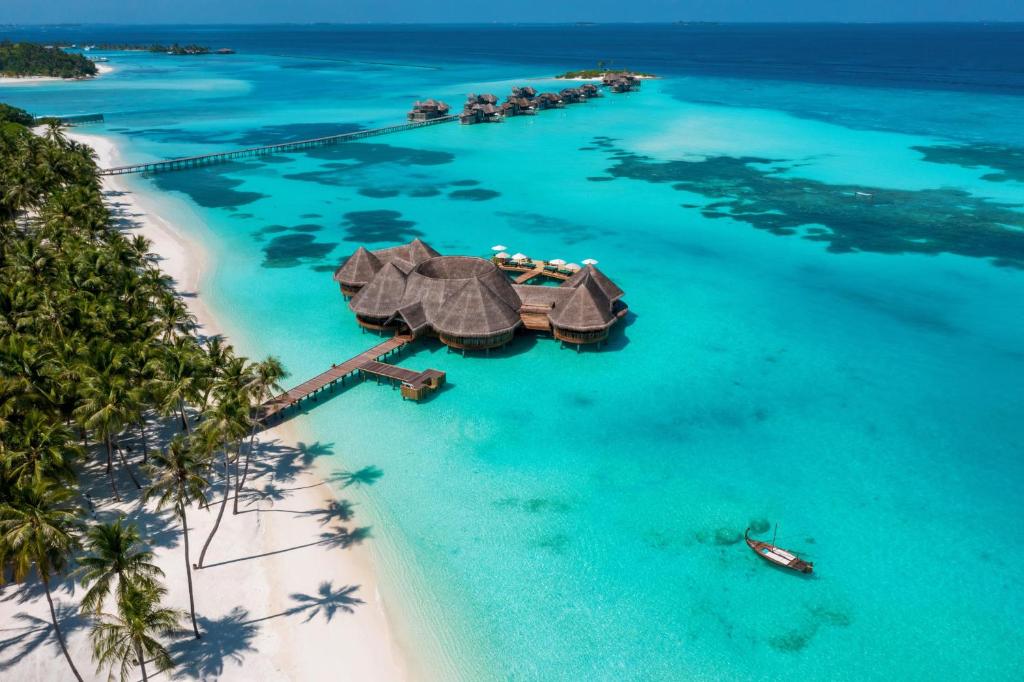

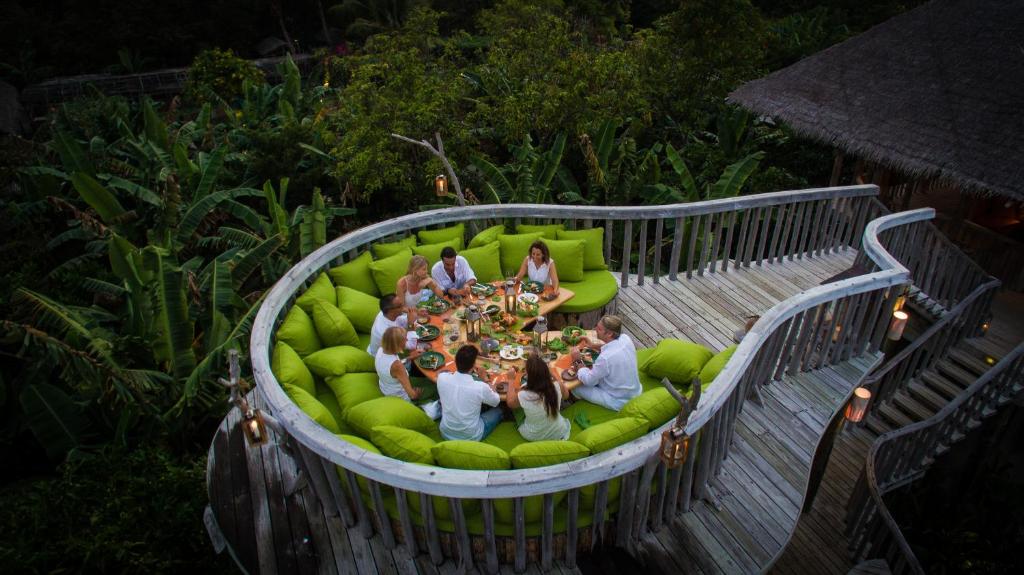
- Examples (tend to be higher budget): Soneva Fushi (a pioneer in sustainable luxury), Gili Lankanfushi (strong emphasis on organic gardens and eco-design), Six Senses Laamu (marine biology research centre), Reethi Beach Resort (known for its environmental commitment).
- Booking Tip: Again, Booking.com and Trip.com are great for comparing resorts. Don’t just look at the pictures; delve into their sustainability reports or “eco” sections on their websites.
Top Things to Do: Beyond Sunbathing (Though That’s Great Too!)
A sustainable week in the Maldives is packed with incredible experiences that connect you with nature and culture.
- Must-Visit Landmarks and Marine Wonders:
- Hanifaru Bay (Baa Atoll UNESCO Biosphere Reserve): If you’re visiting between May and November, this is THE place to (responsibly) snorkel with congregations of manta rays and whale sharks. Access is regulated to protect the animals. Book tours through licensed operators. An absolutely breathtaking experience!
- The Atolls Themselves: Each atoll has its unique charm. South Ari Atoll for whale sharks, Baa Atoll for mantas, North Malé Atoll for famous surf breaks like Chickens and Cokes, Addu Atoll for historical sites and unique dive spots (like the British Loyalty Wreck).
- Malé City: The bustling capital. Visit the Grand Friday Mosque, the Islamic Centre, the National Museum, and the vibrant Malé Fish Market and Local Market. A half-day or full-day trip can offer a fascinating contrast to the tranquil islands.
- Hidden Gems & Local Experiences:
- Visit an Uninhabited Island: Many guesthouses arrange trips to nearby uninhabited islands or pristine sandbanks for a few hours of Robinson Crusoe-style bliss. Pack your own reusable water bottle and snacks, and leave no trace!
- Local Island Exploration: Simply wander the streets of your chosen local island. Observe daily life, visit the local mosque (from the outside, unless invited in and dressed appropriately), chat with islanders (if they’re open to it), and discover small local shops.
- Bodu Beru Performance: Experience this traditional Maldivian music and dance. Some guesthouses arrange performances, or you might catch one during local festivities. It’s powerful and captivating.
- Learn Basic Dhivehi: Locals will be thrilled if you try a few words. It shows respect and interest in their culture.
- Cultural Activities:
- Cooking Class: Learn to prepare traditional Maldivian dishes like Garudhiya (fish broth), Mas Huni (shredded smoked tuna with coconut, onion, and chili – a breakfast staple!), and Bis Keemiya (samosa-like pastry). Some guesthouses offer this.
- Visit a Boat Building Yard: See how the iconic Maldivian dhonis are crafted, a skill passed down through generations.
- Local Handicrafts: Look for authentic Maldivian crafts like wooden lacquerware (liyelaa jehun), woven mats (thun’du kunaa), and coir rope making. Support local artisans directly if possible, but be wary of items made from protected marine life (like turtle shells or coral – avoid these!).
- Outdoor Adventures (Eco-Conscious Edition!):
- Snorkeling: The Maldives is 99% water, and the underwater world is the main attraction. Most guesthouses offer snorkeling trips to nearby reefs (thilas and giris).
- Sustainable Snorkeling Tip: NEVER touch or stand on coral. Use reef-safe sunscreen (non-nano zinc oxide based). Don’t feed the fish. Take only pictures, leave only bubbles.
- Diving: World-class diving awaits. Choose PADI or SSI certified dive centers that emphasize marine conservation. Many local islands now have excellent dive shops. Dhigurah Divers or Ukulhas Dive Centre are examples.
- Kayaking & Stand-Up Paddleboarding (SUP): Explore the calm lagoons around your island at your own pace. A fantastic way to get exercise and see marine life in shallow waters without disturbing it.
- Surfing: The Maldives has some incredible surf breaks, particularly in the North and South Malé Atolls and the Central Atolls. The main surf season is from April to October. Many local islands near famous breaks (e.g., Thulusdhoo near Cokes and Chickens) cater to surfers.
- Fishing (Responsible Methods): Sunset fishing trips using traditional handline methods are popular. Ensure any caught fish are of legal size and not endangered species. Many guesthouses will cook your catch for dinner! Avoid big game fishing targeting protected species.
- Snorkeling: The Maldives is 99% water, and the underwater world is the main attraction. Most guesthouses offer snorkeling trips to nearby reefs (thilas and giris).
- Local Food Tours, Markets, or Experiences:
- Malé Fish Market: A sensory explosion! See the day’s catch being brought in, primarily tuna. It’s a lively, authentic experience. Best visited in the afternoon when the fishing boats return.
- Local Island Cafes (‘Hotels’): These small eateries, often called ‘hotels’ (hotaa), serve authentic, cheap Maldivian food. Try hedhikaa (short eats/snacks) with black tea.
- Fruit Stalls: On islands like Thoddoo, buy fresh tropical fruits directly from the source.
Plan Your Adventures: For booking tours, snorkeling trips, diving excursions, and cultural activities, especially if you want to compare options and read reviews, GetYourGuide.com is a fantastic resource. You can often find unique experiences run by local operators.
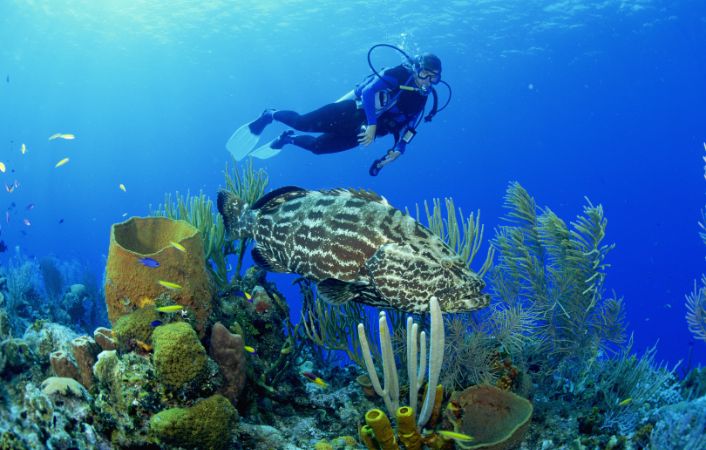
Food and Drink Guide: A Taste of the Real Maldives
Forget overpriced resort buffets (unless that’s your specific indulgence!). The true culinary heart of the Maldives lies in its local dishes, bursting with fresh seafood, coconut, and subtle spices.
- Must-Try Local Dishes:
- Mas Huni: The quintessential Maldivian breakfast. Smoked tuna shredded and mixed with grated coconut, onions, and chili. Served with roshi (a flatbread similar to chapati) and sweetened hot tea. You HAVE to try this!
- Garudhiya: A clear fish broth, often with tuna, lime, chili, and curry leaves. Simple, fragrant, and incredibly comforting. Usually eaten with rice, roshi, lime, and chili.
- Kukulhu Riha: Maldivian chicken curry, typically rich with coconut milk and aromatic spices.
- Boshi Mashuni: A salad made from banana flowers, coconut, and spices. It’s unique and delicious.
- Hedhikaa: A collective term for savory and sweet short eats or snacks. Look for gulha (fish balls), bajiya (samosa-like pastries often filled with tuna), kuli boakiba (spicy fish cakes), and foni boakiba (sweet coconut cakes). Perfect with black tea in the afternoon.
- Freshly Grilled Fish: Simple, yet divine. Often reef fish like snapper or grouper, marinated lightly and grilled.
- Kiru Sarbat: A sweet milk drink, often flavored with spices.
- Fresh Coconuts (Kurumba): Hydrating and delicious, straight from the palm!
- Where to Find Them:
- Local Cafés (Hotaa): These are your go-to for authentic, budget-friendly Maldivian meals. Don’t be intimidated by their simple appearance; the food is often incredible. Ask your guesthouse for recommendations.
- Guesthouse Restaurants: Many guesthouses offer meals, often with a mix of Maldivian and Western dishes. Some provide fantastic home-cooked local food if you request it.
- Malé Markets: The Local Market next to the Fish Market in Malé is great for trying fresh fruits, homemade sweets, and local produce.
- Street Food (with caution): While less prevalent than in other Asian countries, you might find some street food stalls, especially during festivals or on busier islands. Choose wisely.
- Drinks:
- Water: Tap water is generally not potable for tourists. Bottled water is widely available, but this creates a huge plastic waste problem. A key sustainable tip: Bring a reusable water bottle with a built-in filter, or buy large multi-liter bottles to refill your smaller one. Many guesthouses now offer filtered water refill stations.
- Tea (Sai): Black tea, often sweet, is a staple.
- Fresh Juices: Mango, papaya, watermelon – delicious!
- Alcohol: Remember, alcohol is prohibited on local inhabited islands. You can only consume it at licensed private island resorts. Don’t try to bring it onto local islands.
- Vegetarian, Vegan, and Eco-Conscious Options:
- Maldivian cuisine is heavily fish-based. However, vegetarian options are becoming more common, especially in guesthouses catering to tourists.
- Dishes like vegetable curries, dhal (lentil curry), rice, roshi, and fresh fruit are usually available. Communicate your dietary needs clearly and in advance with your guesthouse.
- Many eco-conscious guesthouses and resorts are increasingly offering dedicated vegan menus and focusing on locally sourced organic produce where possible.

Best Time to Visit: Sun, Seasons, and Serenity
The Maldives is a year-round destination, but there are distinct seasons that can affect your trip. The climate is tropical, with plenty of sunshine, warm temperatures (averaging 27-30°C or 80-86°F), and high humidity.
- High Season (December to March/April):
- Pros: This is the dry season (Northeast Monsoon – Iruvai). Expect the calmest seas, lowest humidity, and abundant sunshine. Ideal for beach holidays, diving, and snorkeling with excellent visibility.
- Cons: This is also the most popular and expensive time. Accommodation and flight prices are at their peak. Book well in advance.
- Shoulder Season (April/May and October/November):
- Pros: A good compromise. You might experience some rain, but usually short showers. Weather is still generally good. Fewer crowds than high season, and prices can be more reasonable. Manta ray and whale shark sightings can be excellent during these transitional periods (especially May to November for Hanifaru Bay).
- Cons: Weather can be a bit unpredictable.
- Low Season (May to November):
- Pros: This is the wet season (Southwest Monsoon – Hulhangu). You’ll find the best deals on flights and accommodation. Fewer tourists mean a more tranquil experience on the islands. This is the prime time for surfers (bigger swells) and for manta ray and whale shark sightings in specific locations like Hanifaru Bay.
- Cons: Expect more rain (though often not all day, every day), higher humidity, and potentially rougher seas, which could affect boat transfers and water activities. Visibility for diving might be slightly reduced at times.
My Personal Preference? I love the shoulder seasons. You get a good balance of decent weather, fewer crowds, better prices, and amazing marine life encounters. But honestly, any time in the Maldives can be magical if you go with the right expectations!
Packing Tips: Essentials for Your Island Adventure (Eco-Style!)
Packing light and smart is key, especially if you’re taking seaplanes or domestic flights with luggage restrictions. Plus, packing eco-consciously helps protect this fragile paradise.
- Clothing:
- Lightweight, breathable fabrics (cotton, linen).
- Swimwear (multiple sets if you plan to be in the water a lot).
- Modest attire for local islands: For women, long skirts/dresses, loose trousers, and tops that cover shoulders and cleavage. For men, shorts that cover knees and t-shirts are generally fine (avoid sleeveless tops when not at the beach). A lightweight scarf or sarong is incredibly versatile for women.
- Rash guard (for sun protection while snorkeling/swimming – reduces need for sunscreen).
- Sun hat and sunglasses (essential!).
- Light rain jacket or poncho (especially during wet season).
- Flip-flops/sandals.
- Water shoes (can be useful for some rocky areas or reef walking – but avoid walking on reefs!).
- One slightly dressier outfit if you plan a nice dinner (though “island chic” is very casual).
- Toiletries & Health:
- Reef-safe sunscreen (non-nano zinc oxide): This is CRUCIAL. Regular sunscreens contain chemicals like oxybenzone and octinoxate that damage coral reefs.
- After-sun lotion (aloe vera is great).
- Insect repellent (especially for evenings).
- Basic first-aid kit (band-aids, antiseptic wipes, pain relievers, any personal medications).
- Seasickness medication if you’re prone to it.
- Electronics:
- Universal travel adapter (Maldives uses Type D and Type G outlets, but a universal one is always handy).
- Phone and charger.
- Portable power bank (useful on long day trips).
- Camera, memory cards, and charger (underwater camera if you have one!).
- Consider an eSIM for easy data access. Yesim eSIM is a great option for staying connected without fumbling with physical SIM cards. You can set it up before you even leave home!
- Eco-Friendly Travel Gear:
- Reusable water bottle (with filter if possible): My number one eco-tip!
- Reusable shopping bag: For souvenirs or local produce. Say no to plastic bags.
- Reusable straws and cutlery set: If you’re particular or want to be extra prepared.
- Solid toiletries (shampoo bars, solid conditioner, soap bars): Reduce plastic waste and are leak-proof!
- Quick-dry towel: Lightweight and useful for excursions.
- Documents & Money:
- Passport (with at least 6 months’ validity).
- Flight tickets/confirmations (digital or printed).
- Hotel/guesthouse confirmations.
- Travel insurance details (keep a copy separate).
- Some USD in cash for arrival/visas if needed, and some to exchange for MVR.
- Your Revolut or Wise card for easy spending and ATM withdrawals.

Is It Safe?: Navigating Paradise Wisely
The Maldives is generally a very safe destination for tourists, especially on the resort islands and increasingly well-managed local islands. The crime rate is low. However, like anywhere, it’s good to be aware and take sensible precautions.
- General Safety:
- Petty theft can occur, though it’s not common. Keep your valuables secure in your guesthouse (use a safe if available) and don’t leave belongings unattended on the beach.
- Solo female travelers generally report feeling safe, particularly on local islands where community ties are strong. However, always be aware of your surroundings, dress modestly on local islands to respect cultural norms and avoid unwanted attention.
- Cultural Sensitivity:
- Remember that the Maldives is a conservative Muslim country. Public displays of affection are frowned upon.
- Dress modestly on inhabited islands. This means covering your shoulders and knees when not on designated “bikini beaches.” Toplessness is illegal everywhere, including resorts.
- Alcohol and pork are prohibited on local islands. Do not attempt to bring them from resorts or duty-free.
- During Ramadan, be extra respectful. Avoid eating, drinking, or smoking in public during fasting hours. Many local cafes will be closed during the day.
- Water Safety:
- Currents can be strong, even if the water looks calm. Be cautious when swimming or snorkeling, especially in channels or on outer reefs.
- Never swim or snorkel alone.
- Listen to advice from locals or your guesthouse about safe swimming spots.
- If you’re not a strong swimmer, wear a life vest for water activities.
- Hydrate well – the sun is strong!
- Scams to Watch For:
- Overpriced souvenirs (haggle politely where appropriate, but remember you’re often supporting local artisans).
- Unlicensed tour operators: Book excursions through your guesthouse or reputable, registered operators. GetYourGuide.com can be a good way to find vetted providers.
- Taxi overcharging in Malé (agree on a fare beforehand or ensure the meter is used, though many have fixed rates for certain routes).
- Emergency Contacts:
- Police: 119
- Ambulance: 102
- Coast Guard: 191
- It’s a good idea to have the contact number for your guesthouse and your travel insurance provider readily available.
- Travel Insurance Reminder: I can’t stress this enough. For any unexpected medical issues, accidents, or travel disruptions, having good insurance like EKTA Travel Insurance is invaluable. They offer 24/7 assistance, which is crucial when you’re in a remote location.
By being respectful and aware, you’re sure to have a wonderfully safe and enjoyable trip!
Budget-Friendly Tips: Paradise Without Breaking the Bank
Yes, you can do the Maldives on a budget! Here’s how:
- Stay on Local Islands: Guesthouses offer clean, comfortable, and often charming accommodation at a fraction of the cost of resorts. Plus, you get an authentic cultural experience. Check Booking.com or Trip.com for great deals.
- Eat Local: Dine at hotaas (local cafes). A delicious Mas Huni breakfast might cost you $3-5, and a filling fish curry dinner $5-8. Much cheaper (and often tastier!) than resort restaurants.
- Use Public Ferries: For inter-island travel, the MTCC public ferry network is incredibly cheap, albeit slower. Plan your itinerary around ferry schedules.
- Choose Free/Cheap Activities:
- Snorkel from the house reef (if your island has one accessible from the beach).
- Relax on the beautiful beaches (bikini beaches are free!).
- Explore your island on foot or by bicycle (often free or very cheap from your guesthouse).
- Enjoy sunrises and sunsets – the best show in town is always free!
- Travel in the Shoulder or Low Season: You’ll find significant discounts on accommodation and sometimes even flights.
- Pack Smart: Bring essentials like reef-safe sunscreen and basic medications from home, as they can be more expensive in tourist areas.
- Limit Expensive Excursions: Choose a few key excursions that really appeal to you, rather than doing everything. Share costs with other travelers if possible (e.g., for a private boat trip).
- BYO Reusable Water Bottle: Refill it whenever possible. Buying bottled water constantly adds up (and is bad for the environment).
- Take Advantage of Guesthouse Amenities: Many offer free breakfast, Wi-Fi, and snorkeling gear (though bringing your own mask/snorkel is more hygienic and ensures a good fit).
- Manage Your Money with Smart Cards: Use Revolut or Wise to avoid excessive ATM fees and get good exchange rates.
How Long to Stay: Crafting Your Perfect Maldivian Itinerary
While you could easily lose yourself in the Maldivian bliss for weeks, here are some suggestions for different trip lengths, focusing on a sustainable approach:
- 2-3 Days (A Quick Dip – Not Ideal for a Deep Sustainable Experience, but Possible as a Stopover):
- Focus: One local island relatively close to Malé (e.g., Maafushi, Huraa, or Gulhi).
- Itinerary Sketch:
- Day 1: Arrive at MLE, speedboat to your chosen island. Settle in, explore the island, relax on the bikini beach.
- Day 2: Morning snorkeling trip or sandbank visit. Afternoon, explore more of the island, try local food at a café.
- Day 3: Enjoy a final Maldivian breakfast, speedboat back to MLE for departure.
- This is rushed and doesn’t allow for much cultural immersion or exploration of sustainability initiatives, but it gives you a taste.
- 5-7 Days (Deeper Exploration – Recommended for Your First Sustainable Trip!):
- Focus: One or two local islands, allowing for more activities and relaxation. This is the sweet spot for the trip we’re designing!
- Sample 7-Day Sustainable Itinerary (e.g., Ukulhas & Dhigurah):
- Day 1: Arrival & Ukulhas Charm
- Arrive at Velana International Airport (MLE).
- Take a scheduled speedboat (book via your guesthouse) to Ukulhas (approx. 1.5 hours).
- Check into your eco-friendly guesthouse (e.g., Ukulhas Inn).
- Late afternoon: Explore Ukulhas on foot, note its clean streets, visit the local harbor. Enjoy the sunset on the bikini beach.
- Dinner at a local café – try some fresh grilled fish!
- Day 2: Underwater Wonders & Island Life in Ukulhas
- Morning: Guided snorkeling trip to nearby coral reefs. Look for turtles and colorful fish! (Book via GetYourGuide.com or your guesthouse).
- Lunch at a local hotaa.
- Afternoon: Relax on the beach, read a book, or rent a bicycle to explore the island further. Visit the waste management center if you’re interested in their eco-initiatives.
- Evening: Try a traditional Maldivian cooking class at your guesthouse.
- Day 3: Journey to Whale Shark Paradise – Dhigurah
- Morning: Enjoy a final Ukulhas breakfast.
- Travel from Ukulhas to Dhigurah. This might involve a speedboat combination, potentially via another island or a pre-arranged direct transfer (coordinate with guesthouses). This leg requires planning.
- Check into your guesthouse on Dhigurah (e.g., Bliss Dhigurah).
- Afternoon: Walk the length of Dhigurah’s stunningly long beach. Keep an eye out for dolphins from the shore!
- Dinner at your guesthouse or a local spot.
- Day 4: Whale Shark/Manta Quest in South Ari Atoll
- Morning: The big one! Go on a responsible whale shark and/or manta ray snorkeling/diving tour in the South Ari Atoll Marine Protected Area (SAMPA). Choose an operator that follows guidelines for ethical encounters.
- Lunch: Often included in the tour or back on Dhigurah.
- Afternoon: Relax, process the amazing experience! Maybe rent a kayak for a gentle paddle in the lagoon.
- Evening: Sunset mocktail (fresh juice!) on the beach.
- Day 5: Diving Deeper or Cultural Immersion in Dhigurah
- Option A (Dive Focus): Two morning dives at renowned sites in South Ari Atoll (e.g., Kudarah Thila).
- Option B (Culture/Relax): Visit a nearby uninhabited island for a picnic, learn some Dhivehi phrases from locals, or try your hand at traditional line fishing in the evening.
- Evening: Enjoy a BBQ dinner on the beach if offered by your guesthouse.
- Day 6: Island Farewell & Return towards Malé
- Morning: One last swim or snorkel around Dhigurah. Visit any local craft shops.
- Afternoon: Speedboat from Dhigurah to an island closer to Malé, like Maafushi, or directly to Hulhumalé (the island connected to the airport by road) for your last night. This breaks up the journey for an early flight.
- Settle into your guesthouse in Hulhumalé. Enjoy a final Maldivian dinner.
- Day 7: Departure
- Enjoy breakfast. If time permits, explore Hulhumalé or do some last-minute souvenir shopping (responsibly!).
- Easy transfer to Velana International Airport (MLE) for your flight home, filled with incredible memories and a new perspective on the Maldives!
- Day 1: Arrival & Ukulhas Charm
This itinerary balances iconic marine encounters with local island life and allows for travel time. You can adapt it based on your interests and chosen islands. Remember to book inter-island transfers in advance, especially speedboats!
Best Sunrise/Sunset Spots: Nature’s Daily Masterpiece
The Maldives delivers some of the most spectacular sunrises and sunsets you’ll ever witness. The vast, flat horizon and the reflections on the water create a daily show that’s pure magic.
- Sunrise:
- Your Guesthouse Balcony/Beachfront: Many guesthouses are positioned perfectly for sunrise. Waking up early and stepping out to see the sky ignite is a peaceful and beautiful start to the day.
- Eastern-Facing Beaches: On any island, find the beach that faces east. Ukulhas‘s eastern beach is lovely for this.
- On a Morning Fishing Trip: Be out on the water as the sun comes up – a truly serene experience.
- Sunset:
- Western-Facing Beaches: The classic. Most islands will have a designated sunset point or a beautiful stretch of western beach. The bikini beach on Dhigurah offers stunning sunset views.
- Sunset Cruises: Many guesthouses offer sunset cruises, sometimes combined with dolphin watching. Highly recommended!
- Sandbanks: Being on a secluded sandbank as the sun dips below the horizon is an unforgettable experience.
- Overwater Bungalow (if you splurge for a night or two in a resort): The quintessential sunset view, of course.
- The Jetty of Your Island: Often a great, unobstructed vantage point.
Pro Tip: The colors often become most intense about 10-15 minutes after the sun has actually dipped below the horizon. Stick around!

Sustainable Travel Tips: Protecting Paradise for Generations
Traveling sustainably in the Maldives isn’t just a nice idea; it’s essential for the survival of this incredibly fragile and beautiful nation. Here’s how you can be a responsible and eco-conscious traveler:
- Choose Eco-Friendly Accommodations:
- Opt for locally owned guesthouses on inhabited islands. Your money directly supports local families and communities.
- Look for guesthouses with stated environmental policies (e.g., waste management, water conservation, solar power). Ukulhas is known for its community-led efforts in this area.
- If choosing a resort, research their sustainability initiatives thoroughly.
- Respect Marine Life & Coral Reefs:
- NEVER touch, stand on, or break coral. Corals are living animals and are extremely fragile. Even a slight touch can damage them.
- Do not feed fish or other marine life. It disrupts their natural feeding patterns and can make them aggressive or dependent.
- Maintain a respectful distance from marine animals (turtles, sharks, mantas). Do not chase or harass them.
- Use reef-safe sunscreen. Look for mineral-based sunscreens with non-nano zinc oxide or titanium dioxide. Avoid those with oxybenzone, octinoxate, and octocrylene.
- Choose responsible dive and snorkel operators who educate guests and follow eco-friendly practices (e.g., no anchoring on reefs, small group sizes).
- Reduce Your Plastic Consumption:
- Bring a reusable water bottle and refill it. Say NO to single-use plastic bottles.
- Bring a reusable shopping bag.
- Avoid products with excessive plastic packaging.
- Politely refuse plastic straws.
- Pack out any plastic waste you can if disposal options are limited where you are.
- Conserve Water & Energy:
- Take shorter showers.
- Turn off lights, air conditioning, and fans when you leave your room.
- Many Maldivian islands rely on desalination plants for fresh water, which are energy-intensive. Be mindful of your usage.
- Support Local Businesses:
- Eat at local cafes, shop in local stores, and buy authentic Maldivian handicrafts (ensure they are sustainably made and not from protected species).
- Hire local guides for tours and activities. GetYourGuide.com often lists local providers.
- Dispose of Waste Properly:
- Use designated bins. If you can’t find one, hold onto your trash until you do.
- Recycle if facilities are available (this is still developing in many areas, but improving).
- Never litter, especially on beaches or in the ocean.
- Respect Local Culture & Customs:
- Dress modestly on inhabited islands.
- Ask for permission before taking photos of people.
- Learn a few basic Dhivehi phrases.
- Be aware of Islamic prayer times and customs, especially during Ramadan.
- Minimize Your Carbon Footprint:
- Choose direct flights where possible.
- Opt for public ferries or shared boat transfers over private ones when feasible.
- Walk or cycle on islands.
- Consider offsetting your carbon emissions from your flights.
- Educate Yourself & Others:
- Learn about the environmental challenges the Maldives faces (climate change, sea-level rise, coral bleaching).
- Share your sustainable travel tips and experiences with others.
By making these conscious choices, you contribute to preserving the breathtaking beauty and unique culture of the Maldives for future generations.

Final Tips for Visitors: Making Your Trip Smooth & Savvy
Just a few more pearls of wisdom to ensure your Maldivian adventure is as seamless and enjoyable as possible!
- Currency Exchange & Payments:
- While USD is accepted in many tourist-oriented places (especially resorts), it’s best to have Maldivian Rufiyaa (MVR) for local islands, small shops, and local cafes.
- You can exchange currency at the airport upon arrival or at banks in Malé. Exchange rates might be slightly better in Malé than at the airport.
- ATMs are available at the airport, in Malé, and on some larger local islands. Inform your bank of your travel dates!
- Credit cards are widely accepted in resorts and larger guesthouses/shops.
- For the best way to manage your money, I can’t recommend multi-currency cards like Revolut or Wise enough. You can often get much better exchange rates and lower fees compared to traditional bank cards. Load them up before you go!
- Language:
- The official language is Dhivehi. English is widely spoken in tourist areas.
- Learning a few basic Dhivehi phrases will be highly appreciated:
- Hello: Assalaamu alaikum
- Thank you: Shukuriyaa
- Yes: Aan
- No: Noon
- How much?: Kihaa Vareh?
- Beautiful: Reethi
- Connectivity (SIM Cards & Wi-Fi):
- Most guesthouses and cafes offer free Wi-Fi, though the speed can vary, especially on more remote islands.
- For constant connectivity, consider getting a local SIM card upon arrival at the airport. Dhiraagu and Ooredoo are the main providers. They offer tourist packages with good data allowances.
- Alternatively, for ultimate convenience, get an eSIM before you travel. Yesim eSIM allows you to download a data plan directly to your phone, so you’re connected the moment you land. No need to queue or swap physical SIMs!
- Apps for Booking & Travel:
- Booking.com / Trip.com: For accommodation.
- CheapOair / Trip.com: For flights.
- GetYourGuide.com: For tours and activities.
- Google Maps: For navigation and exploring.
- MTCC: Check their website for public ferry schedules.
- Revolut / Wise: For managing your finances.
- Airline apps: For checking in and managing your flights.
- Tipping:
- Tipping is not mandatory but is appreciated for good service.
- In resorts, a service charge (usually 10%) is often included in the bill. Additional tipping is at your discretion.
- On local islands, for guesthouse staff, dive instructors, or boat crews, a small tip ($5-10 USD for good service over a few days) is a nice gesture if service was exceptional. Tip in USD or MVR.
- Photography Etiquette:
- Always ask for permission before taking photos of people, especially identifiable individuals.
- Be mindful when photographing religious sites.
- Fridays:
- Friday is the weekend in the Maldives (like Sunday in many Western countries). Many shops and services, including public ferries, may have limited hours or be closed, especially during prayer times (around midday). Plan accordingly.
Your Maldivian Eco-Adventure Awaits! (Don’t Just Dream It, Do It!)
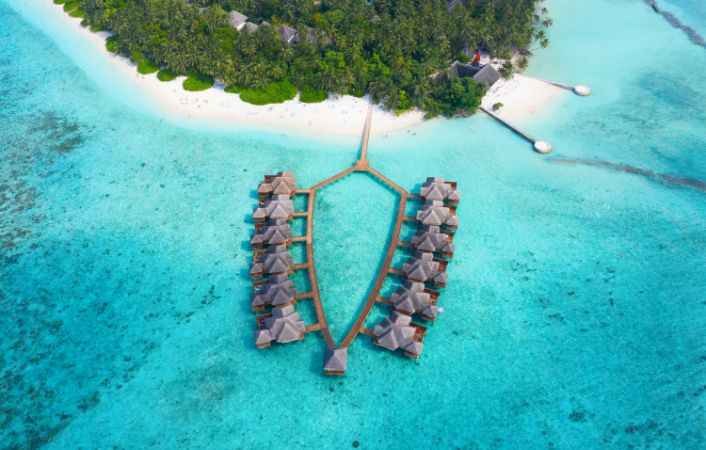
Wow, we’ve covered a lot of ground, haven’t we? From the moment you start dreaming of those turquoise waters to the final, sun-kissed wave goodbye, my hope is that this guide has not only equipped you with all the practical know-how but has also ignited a spark within you to experience the Maldives in a more meaningful, sustainable, and authentic way. This isn’t just about ticking off another destination; it’s about connecting with a place, its people, and its precious environment on a deeper level.
The Maldives is so much more than its luxury facade. It’s the shy smile of a child on a local island, the taste of freshly caught tuna prepared with generations of love, the thrill of swimming alongside a gentle giant of the ocean, and the quiet satisfaction of knowing your visit is helping to preserve this paradise, not harm it. It’s about the stories you’ll gather, the perspectives you’ll gain, and the memories that will shimmer long after the tan lines fade.
Choosing a sustainable path in the Maldives – staying local, respecting the culture, protecting marine life – doesn’t mean sacrificing an incredible vacation. In fact, I believe it enhances it, making it richer, more rewarding, and infinitely more memorable. You’re not just a tourist; you become a conscious traveler, a temporary custodian of this beautiful corner of our planet.
So, what are you waiting for? Those powdery sands, vibrant reefs, and warm Maldivian welcomes are calling your name. Start planning, get booking (responsibly, of course!), and prepare for an adventure that will touch your soul.
I’d LOVE to hear from you!
Have you been to the Maldives? Are you planning a sustainable trip? What are your top tips or biggest questions? Write me an email to contact@atinytraveler.com Let’s build a community of responsible Maldives explorers together!
And hey, if you found this mega-guide helpful (I poured my heart and countless cups of tea into it!), please share it with your travel buddies who might be dreaming of an ethical island escape.
Want more in-depth travel guides, sustainable travel tips, and stories from the road? Then you absolutely need to subscribe to my newsletter! You’ll get all the good stuff delivered straight to your inbox, plus exclusive content and updates.
And don’t forget to follow my adventures on social media! I’m always sharing snaps, tips, and live updates from my travels. You can find me on:
- Instagram: a.tinytraveler
- Facebook: A Tiny Traveler
- Pinterest: A Tiny Traveler
Let’s keep the conversation going and inspire each other to explore the world beautifully and responsibly.
Safe and sustainable travels, my friend! I can’t wait to see where you go next (and maybe even bump into you on a remote Maldivian beach someday!).


